Pattern Recognition
EchoMail offers a range of pattern recognition services including:
Signature Verification
Optical Character Recognition (OCR)
Image Analysis
Signal Processing
Speech Recognition
Disease Categorization
Since 1978, Dr.SHIVA Ayyadurai, MIT PhD in Biological Engineering, Inventor of Email, Scientist, Engineer, Educator, did pioneering research on the use of pattern recognition in Sudden Infant Death
Pattern recognition classification methods can be applied to a diversity of problems. Sharing the portfolio of the author’s research and development efforts in the field will provide the reader with a glimpse of that diversity, which traverse signals and signatures across a range of industries: biology and medicine, engineering (e.g. aeronautical, civil, mechanical, and electrical), banking, finance, and, government.
Sudden Infant Death Syndrome (SIDS) Research (1978 – 1984)
Sudden Infant Death Syndrome (SIDS) is the leading cause of death in babies between one month and one year of age. In 1978, Dr. Shiva’s interest in pattern recognition first began, when as a 14-year-old he was recruited by the University of Medicine and Dentistry of New Jersey (UMDNJ) in Newark, NJ as a Research Fellow.
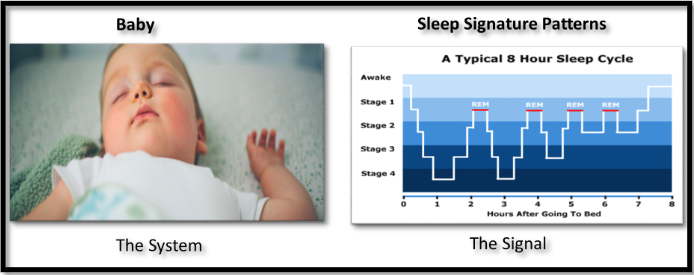
His medical research at UMDNJ focused on developing pattern recognition classification methods for categorization of sleep signature patterns from babies with SIDS. His research identified certain signatures of waiting times of babies’ sleep transition states i.e. the Abnormal States, that appeared to occur before the onset of apneas i.e. when the baby stops breathing. His work led to a scientific paper published and presented at the IEEE/EMBS International Conference in Espoo, Finland.
Tadoma Research (1983 – 1986)
Tadoma is a means of communication used by the deafblind. In this approach, the deafblind person places their right or left hand, and the fingers on the face of a person. The tactile functions of the hand are able to perceive the airflow, vibrations, jaw locations, lip location, and protrusions to sense speech, as illustrated in Figure 2,
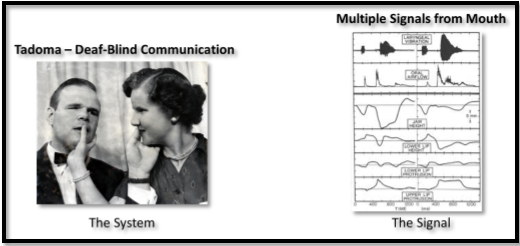
During 1983 to 1986, Dr. Shiva’s research at the MIT Speech Laboratory, through the MIT Undergraduate Research Opportunities Program (UROP), served to help categorize specific signatures of these facial movements towards aiding researchers to identify the mechanisms of Tadoma.
Non-Destructive Evaluation (NDE) for Bridge Deck Deterioration (1986 – 1988)
It is estimated that more than 50,000 bridges in the United States are falling apart with varying types of decay and failure. Identifying the nature of these failures, using non invasive approaches can save time and money. In 1986, under an NSF funded project in the MIT Department of Civil Engineering, Dr. Shiva created algorithms for classification of bridge deck deterioration signatures acquired from radar analysis.

Such research known as Non-Destructive Evaluation (NDE) aimed to identify flaws in large structures such as bridges, without invasive interventions, to prevent damage and potentially save lives by addressing structural issues before onset of a failure.
Non-Destruction Testing (NDT) of Composite Parts of Aircraft Wings (1988-1990)
Aerospace parts, such as the wings of an aircraft, may consist of flaws and incongruencies that can lead to catastrophic failures.
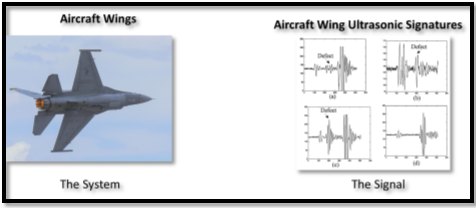
In the aerospace industry, non-destructive testing (NDT) is a critical component in efforts to decrease the risk of potentially fatal failures. Dr. Shiva’s research in applying pattern recognition for NDE of bridge decks evolved to his Masters work at MIT in the Department of Mechanical Engineering where he developed a computational model of wave propagation in composite materials, that he used to create unsupervised pattern recognition classification methods for NDT of composites in order to characterize flaws and irregularities in objects such as aircraft wings. The research aimed to classify signals in order to support preventative maintenance of structures like aircraft wings without disrupting their integrity.
Handwritten Numerals on Bank Checks (1992-1994)
Even though online banking has grown, there still continues to be a need for processing
paper checks.
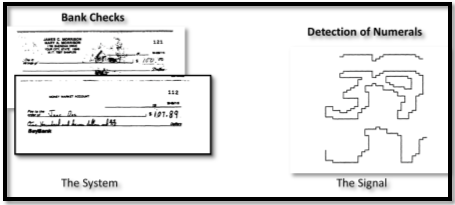
For his PhD work, starting in 1990, Dr. Shiva set out to create a generalized framework, which he termed Information Cybernetics, for solving diverse pattern recognition problems. In 1992, he began work with researchers at the MIT Sloan School on a project to automatically recognize the courtesy amount on bank checks. This effort resulted in his leading an MIT team to architect and create a fully working prototype of a hybrid neural network based system for pattern recognition of the courtesy amount on bank checks, which he successfully demonstrated to NatWest Bank. The work resulted in a pioneering paper in the International Journal of Pattern Recognition and Artificial Intelligence (IJPRAI) in 1993.
EchoMail®: Automatic Document Analysis and Classification (1993-Present)
Following the invention of email by Dr. Shiva in 1978, and up until 1993, email was an inter- and intra- office business application. However, after the advent of the World Wide Web (WWW) in 1992, web-based email applications made email a consumer application resulting in an explosive growth of email usage.
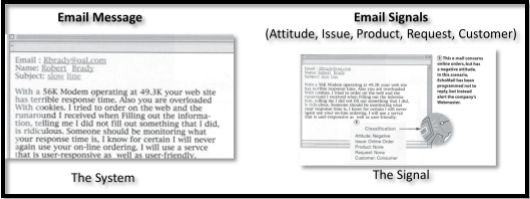
In 1993, the White House, Executive Office of the President, sponsored an industry-wide competition to automatically to analyze and classify President Clinton’s email to assist in handling the deluge of email. While in the midst of his PhD work, after being selected as the only student participant, Dr. Shiva won this industry-wide competition. This resulted in his being awarded a number of foundational patents in pattern recognition (one of which is shown in Figure 23) and developing EchoMail® – a platform for enabling pattern recognition classification of electronic documents, which led to his starting EchoMail, Inc., a company that grew to nearly $200 million in market valuation. EchoMail was featured in a front-page article in The MIT Technology Review, the leading magazine for technology.21
EchoMail enabled the automatic classification and routing of large volumes of email for Global 2000 companies such as Nike, American Express, P&G, Citigroup, to enable rapid response to customer inquiries, as well as to increase levels of customer service.

The approach here, as aforementioned, was to identify the Normal State as well as the Abnormal States of an email, as illustrated in Figure 8.
21 Dr. Email Will See You Now, MIT Technology Review, https://vashiva.com/wpcontent/uploads/2019/12/2000_tech_review.pdf, accessed September 15, 2021
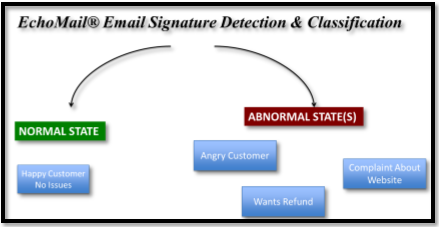
CytoSolve®: Discovering Combinations That Work (2007-Present)
Modern pharmaceutical companies spend upwards of $5 billion and up to 13 years of research and development to discover and get a single molecule drug to market. However, the future of medicine demands the need for multi-combination therapies i.e. “cocktails,” which are not possible with conventional approaches. Such efforts require a computational systems biology approach integrating pattern recognition methods.
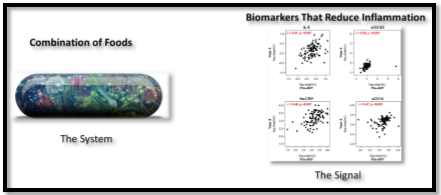
In 2003, Dr. Shiva returned to MIT to complete his doctoral work in computational systems biology in the department of Biological Engineering, where he developed CytoSolve®, a scalable computational systems biology platform for modeling the whole cell by dynamic integration of molecular pathways models. CytoSolve computationally models complex diseases and biomolecular processes to discover multi combination therapeutics by identifying biomarker signatures that are associated with optimal combinations. CytoSolve earned an FDA allowance in a record 11 months for a multi-combination therapy for pancreatic cancer. Today, CytoSolve is being used to develop a diverse range of innovative multi-combination products from natural sources, across a variety of indications including pain, inflammation, oral health, brain health, and relaxation, to name a few.
As should be evident, from these examples, pattern recognition classification methods can be applied to a range of problems.
